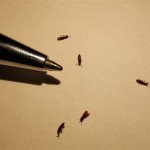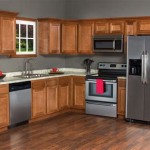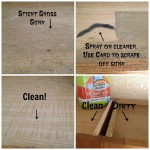Sanding and Restaining Kitchen Cabinets: Essential Aspects for a Refreshing Transformation
Sanding and restaining kitchen cabinets is a crucial home improvement task that can revitalize their appearance and elevate the overall ambiance of your kitchen. Understanding the essential aspects of this process is paramount for achieving optimal results. This article delves into the key factors to consider when sanding and restaining, providing a comprehensive guide to ensure a successful and satisfying outcome.
1. Cabinet Preparation: The Foundation for Success
Proper cabinet preparation sets the stage for a smooth and effective sanding and staining process. Remove all hardware, including hinges, knobs, and handles. Thoroughly clean the cabinets to remove dirt, grease, and any previous finishes. For stubborn grime, consider using a degreaser or a mixture of TSP (trisodium phosphate) and water.
2. Sanding: Stripping Away the Old, Revealing the New
Sanding is the process of removing the existing finish and leveling the cabinet surfaces. Start with a coarse-grit sandpaper (80-120 grit) to strip away the finish. Gradually move to finer grits (180-220 grit) to smooth the surface and remove any sanding marks. Use a sanding block or orbital sander for efficiency and consistency.
3. Stain Selection: The Heart of the Transformation
Choosing the right stain is essential for achieving the desired color and finish. Test different stains on inconspicuous areas or sample boards to determine the result. Consider the natural grain of the wood and the overall style of your kitchen when making your selection.
4. Staining Techniques: Achieving a Flawless Finish
Apply the stain using a brush, rag, or foam applicator. Work in the direction of the wood grain and apply thin, even coats. Allow each coat to dry completely before applying the next. To achieve a darker finish, apply additional coats until the desired result is obtained.
5. Protective Finishes: Sealing in the Beauty
Once the stain has dried, apply a protective finish to protect your newly refinished cabinets. Choose from polyurethane, varnish, or lacquer based on the desired sheen and durability. Apply multiple thin coats, sanding lightly between each coat to ensure a smooth and durable finish.
6. Hardware Installation: The Finishing Touch
After the protective finish has cured, reattach the hardware. Use new screws or bolts to ensure a secure fit. Adjust the hinges and drawer slides as necessary for proper operation.
Conclusion
Sanding and restaining kitchen cabinets is a rewarding project that can significantly enhance the appearance of your kitchen. By following these essential aspects, including cabinet preparation, sanding, stain selection, staining techniques, protective finishes, and hardware installation, you can achieve a professional-looking result that will bring new life to your kitchen cabinetry.

Cabinet Refinishing An 8 Step Guide For Pro Painters Ppc

Refinishing Kitchen Cabinets Modern Refacing Made Easy Wisewood

Staining Your Wood Cabinets Darker Young House Love
Refinishing Kitchen Cabinets A Beautiful Mess

How To Make Rustic Kitchen Cabinets By Refinishing Them The Best Stain Color Amanda Katherine

The Fast Affordable Way To Upgrade Your Kitchen Cabinet Refinishing

How To Refinish Wood Cabinets The Easy Way Love Remodeled

Staining Cabinets Upgrades Advice Needed

How I Updated My Oak Cabinets Without Paint By Using Briwax Easy Budget Kitchen Makeover Only 24

Cabinet Refinishing Guide
Related Posts








